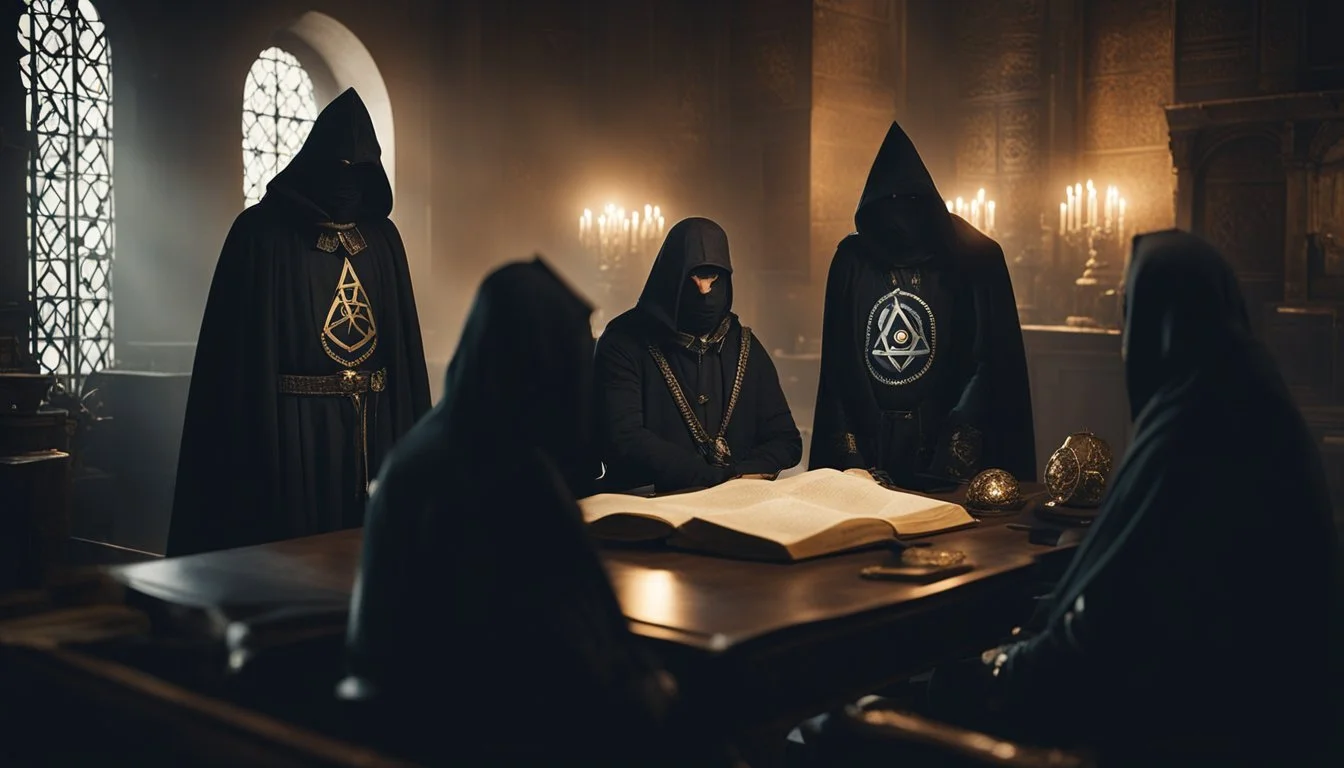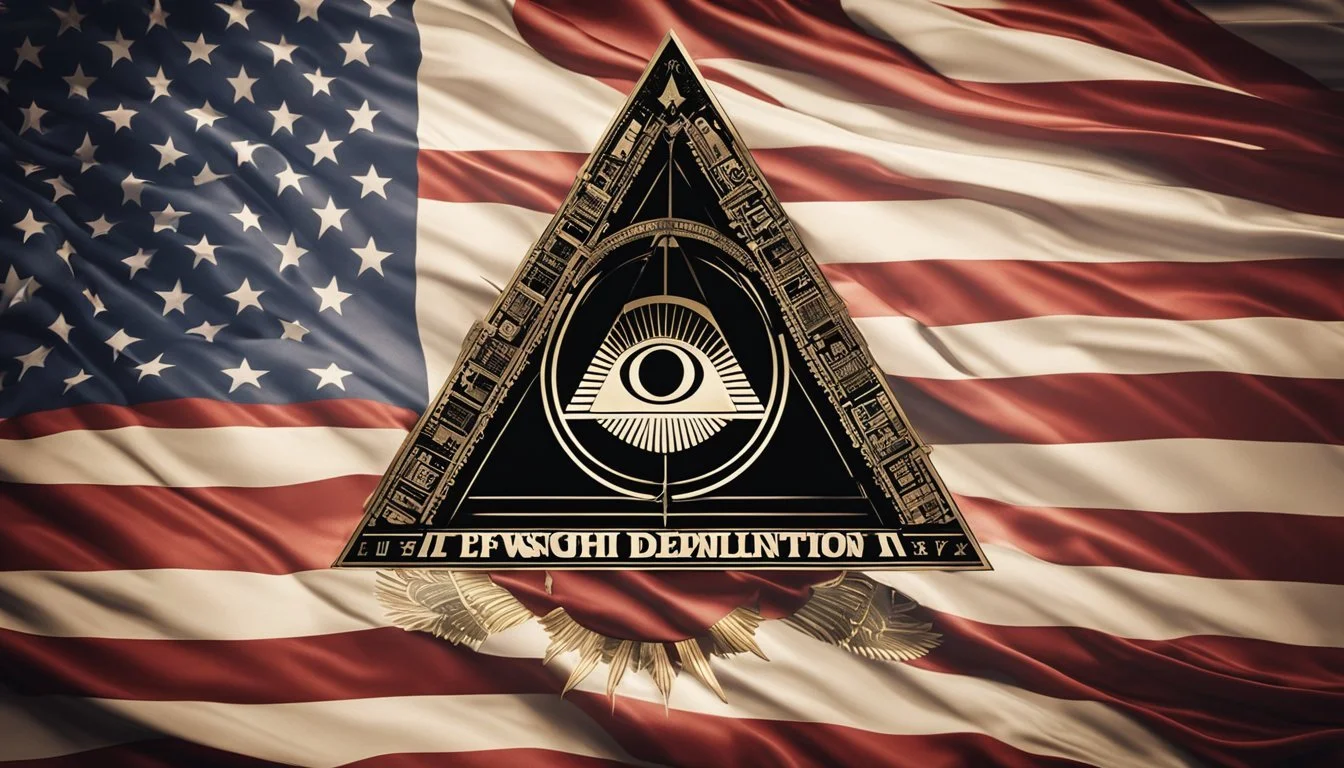Shadow Puppets or Puppet Masters? Illuminating the Truth Behind Illuminati World Control Claims
Conspiracy theories about secret societies controlling world governments have captivated imaginations for centuries. The Illuminati, a group founded in 18th-century Bavaria, has become a focal point for such claims. Despite its historical origins, the modern concept of an all-powerful Illuminati orchestrating global events is largely a product of fiction and speculation.
There is no credible evidence to support the idea that the Illuminati controls world governments. This belief stems from a complex web of myths, misunderstandings, and deliberate misinformation. While powerful individuals and organizations certainly influence political decisions, the notion of a single, shadowy group pulling all the strings is not supported by facts.
The persistence of Illuminati conspiracy theories reflects broader societal anxieties about power, transparency, and control in an increasingly complex world. These ideas often oversimplify complex geopolitical realities and attribute disparate events to a single, coordinated effort. While critical thinking about power structures is valuable, it's important to distinguish between evidence-based concerns and unfounded speculation.
Historical Context of the Illuminati
The Illuminati emerged in 18th century Bavaria as a secret society with ambitious goals. Their brief existence and subsequent suppression sparked centuries of speculation and conspiracy theories.
Origins of the Illuminati
Adam Weishaupt, a professor of canon law at the University of Ingolstadt, founded the Bavarian Illuminati on May 1, 1776. Weishaupt, a former Jesuit, aimed to promote Enlightenment ideals and combat religious influence over public life. He called the group's members "Perfectibilists," reflecting their goal of moral and intellectual perfection.
The organization adopted a hierarchical structure similar to Freemasonry. It attracted intellectuals, politicians, and wealthy individuals across Bavaria and other German states. The Illuminati's stated objectives included:
Opposing superstition and religious influence over public life
Challenging abuses of state power
Promoting education and gender equality
Influence During the Enlightenment
The Illuminati grew rapidly, spreading beyond Bavaria to other parts of Germany and Europe. At its peak, the group claimed between 2,000 and 3,000 members. Notable figures like Johann Wolfgang von Goethe and Ferdinand of Brunswick joined its ranks.
The organization's influence extended into politics and academia. Members held positions in governments and universities, allowing them to promote Enlightenment ideals. Their teachings emphasized reason, secularism, and republican values.
The Illuminati's reach alarmed conservative elements in society. Critics accused the group of plotting to overthrow European monarchies and the Catholic Church. These fears intensified as the French Revolution erupted in 1789.
Decline and Suppression
In 1784, Karl Theodor, Elector of Bavaria, issued an edict banning all secret societies, including the Illuminati. This decree forced the group underground. Further edicts in 1785 specifically outlawed the Illuminati and imposed harsh penalties for membership.
Many Illuminati members faced arrest, exile, or loss of their positions. Weishaupt fled Bavaria in 1785, effectively ending his leadership of the group. By 1787, the Bavarian Illuminati had largely ceased to exist as an organized entity.
The group's suppression fueled speculation about its continued existence. Some claimed the Illuminati survived underground, influencing world events from the shadows. These theories laid the groundwork for modern Illuminati conspiracy myths.
Theories of Modern Illuminati Control
Modern conspiracy theories propose that a secret Illuminati organization exerts hidden influence over governments and global events. These ideas have evolved significantly since their origins.
Emergence of New World Order Conspiracy Theories
The concept of a "New World Order" gained traction in the late 20th century. Conspiracy theorists claim a powerful elite aims to create a totalitarian world government. This theory often incorporates the Illuminati as key orchestrators.
Some believe the Rothschild family plays a central role in this alleged plot. They point to the family's historical influence in banking as evidence of their continued power. Proponents argue that international organizations like the United Nations serve as fronts for advancing the New World Order agenda.
Evolution of Illuminati Conspiracy Theories
Illuminati theories have roots in John Robison's 1798 book exposing the historical Bavarian Illuminati. Over time, these ideas merged with other conspiracy narratives.
Modern versions suggest the Illuminati survived its supposed dissolution and grew in secret. Theorists claim the group now comprises influential figures in politics, finance, and entertainment. They argue that Illuminati symbols appear in popular media as a form of hidden communication.
Some cite George Washington's letters mentioning the Illuminati as proof of the group's early influence in America. However, historians generally interpret these references differently.
Connection to Major Global Events
Conspiracy theorists often link the Illuminati to significant world events. They argue that seemingly unconnected incidents are part of a larger plan.
A prominent example is the claim that the Illuminati orchestrated the 9/11 attacks. Proponents suggest this was done to justify increased government surveillance and control. Similar arguments connect the group to economic crises, wars, and technological advancements.
These theories typically lack credible evidence. Critics argue they oversimplify complex global issues and ignore more plausible explanations for world events.
Psychology Behind Conspiracy Beliefs
Conspiracy beliefs stem from complex psychological factors that influence how people perceive and interpret information. These factors shape individuals' tendencies to accept or reject alternative explanations for events and societal structures.
Paranoia and Fear in Society
Paranoia and fear play significant roles in the spread of conspiracy theories. Individuals who feel threatened or anxious about their environment may be more susceptible to believing in hidden plots. This mindset can lead to heightened suspicion of authority figures and institutions.
Conspiracy theorists often exhibit higher levels of paranoid thinking compared to the general population. They may perceive benign events as intentional and malicious. This paranoia can be self-reinforcing, as each new piece of information is filtered through a lens of suspicion.
Fear of the unknown or complex global events can drive people to seek simple explanations. Conspiracy theories offer clear narratives that reduce cognitive dissonance and provide a sense of control.
Role of Powerlessness and Uncertainty
Feelings of powerlessness and uncertainty contribute to the appeal of conspiracy beliefs. When individuals feel they lack control over their lives or society, conspiracy theories can provide a sense of understanding and agency.
Research shows that people experiencing economic or political instability are more likely to endorse conspiracy theories. These beliefs can serve as coping mechanisms, allowing individuals to attribute their challenges to external forces rather than random chance.
Uncertainty about complex issues like politics, science, or global events can make conspiracy theories attractive. They offer seemingly coherent explanations for confusing or contradictory information, reducing cognitive discomfort.
Impact of Social Media and the Internet
Social media and the internet have dramatically altered how conspiracy theories spread and evolve. Online platforms create echo chambers where like-minded individuals reinforce each other's beliefs without exposure to contradicting viewpoints.
The rapid sharing of information online can cause conspiracy theories to gain traction quickly. Algorithms on social media sites often prioritize engaging content, which can include sensational or controversial conspiracy claims.
Internet forums and groups dedicated to specific conspiracy theories provide communities for believers. These spaces allow for the collaborative development of increasingly complex and interconnected conspiracy narratives.
The anonymity of the internet emboldens some to share extreme views they might not express in person. This can normalize fringe beliefs and create the illusion of wider acceptance.
Perception and Influence in Political Spheres
The alleged Illuminati influence in political spheres has sparked debates among scholars and the public. Claims of secret control over governments persist, despite lack of evidence.
Conspiracy Theories and Political Scientists
Political scientists generally dismiss Illuminati conspiracy theories as unfounded. They point to the complexity of modern political systems and the difficulty of maintaining large-scale secrecy.
Some researchers study these theories as examples of political mistrust. They examine how such beliefs can impact voter behavior and policy preferences.
Conspiracy narratives often portray elected governments as puppets of a hidden elite. This view contradicts established political science models of democratic processes and institutional checks and balances.
Infiltration Theories into Governmental Institutions
Theories of Illuminati infiltration into government institutions lack credible evidence. Proponents claim the group places members in key positions across agencies and branches of government.
The United States is often a focus of these theories. Believers point to symbols like the Eye of Providence on the dollar bill as proof of Illuminati presence.
Critics argue that government transparency and watchdog organizations make widespread infiltration unlikely. They note the challenges of coordinating such a vast conspiracy without detection.
Illuminati and Symbolic Representations
Illuminati conspiracy theories often revolve around symbolic interpretations. The triangle and the Eye of Providence are frequently cited as Illuminati emblems in government imagery.
These symbols have roots in Western Esotericism and Freemasonry. Their presence on official seals and currency fuels speculation about hidden meanings.
Historians trace many of these symbols to the Founding Fathers' interest in Enlightenment ideals. They argue that the original intent was to represent concepts like divine providence and strength in unity.
Critics of Illuminati theories emphasize the importance of historical context when interpreting these symbols. They caution against reading modern conspiracy narratives into centuries-old imagery.
Media's Role in Spreading Illuminati Theories
Media platforms have played a significant part in popularizing and disseminating Illuminati conspiracy theories. News outlets, popular culture, and influential figures have all contributed to the widespread awareness of these ideas.
Coverage in News and Popular Culture
News media occasionally report on Illuminati-related topics, often framing them as curiosities or debunking attempts. This coverage, while often skeptical, still exposes wider audiences to these theories. Popular culture embraces Illuminati themes in movies, TV shows, and music videos, further embedding these concepts in public consciousness.
Some artists incorporate Illuminati symbolism into their work, sparking discussions and interpretations among fans. Video games and comic books also feature secret society storylines, blurring the lines between fiction and conspiracy theories for some consumers.
Propagation Through Literature and Films
Books and films have been powerful vehicles for spreading Illuminati theories. The "Illuminatus! Trilogy" by Robert Shea and Robert Anton Wilson popularized many modern Illuminati concepts. Dan Brown's novels, particularly "Angels & Demons," brought Illuminati themes to mainstream readers.
Documentaries and films exploring secret societies have found audiences on streaming platforms. These productions often mix historical facts with speculative claims, creating compelling narratives that can be mistaken for factual accounts by some viewers.
Influence of Celebrities and Public Figures
Celebrities and public figures sometimes reference Illuminati theories, intentionally or not. Some use Illuminati imagery in their art or fashion, fueling speculation about their involvement. Others directly discuss these theories in interviews or social media posts.
David Icke, a prominent conspiracy theorist, has written extensively about the Illuminati, gaining a significant following. His YouTube videos and public speeches have reached millions, spreading his ideas globally. Some musicians and actors have been accused of Illuminati membership, often based on hand gestures or symbols in their performances.
Critiques and Debunking of Illuminati Conspiracies
Numerous scholars, historians, and researchers have critically examined Illuminati conspiracy theories. Their work challenges claims of global control by a secret society through rigorous analysis and fact-checking.
Role of Academia and Historians
Academic institutions play a crucial role in scrutinizing Illuminati conspiracy claims. Historians at universities like the University of Florida have conducted extensive research into the origins and evolution of these theories.
Their findings often reveal a lack of credible evidence supporting widespread Illuminati influence. Many academics trace the modern Illuminati myth to works of fiction and misinterpretations of historical events.
Reputable historians emphasize the importance of primary sources and verifiable facts when examining conspiracy claims. They urge critical thinking and skepticism toward sensationalized accounts lacking solid proof.
Assessing Credibility of Evidence
Evaluating the credibility of evidence is crucial in debunking Illuminati conspiracies. Experts recommend examining the reliability of sources, looking for corroborating information, and considering alternative explanations.
Many alleged "proofs" of Illuminati control stem from misinterpreted symbols or coincidences. Physicists and other scientists often debunk claims of hidden technologies or supernatural powers attributed to the group.
Fact-checkers stress the importance of distinguishing between verified historical information and speculative or fictional accounts. They encourage readers to seek out peer-reviewed research and reputable sources.
Misinformation and Rational Analysis
The spread of misinformation fuels many Illuminati conspiracy theories. Social media and certain websites can amplify false claims, making rational analysis crucial.
Experts advise approaching extraordinary claims with skepticism and seeking evidence from multiple reliable sources. They warn against confirmation bias and the tendency to see patterns where none exist.
Critical thinking skills are essential in combating disinformation. Educators and media literacy advocates promote tools for identifying propaganda and evaluating the credibility of information sources.
Conspiracy Theories in the Modern Era
Conspiracy theories have gained renewed prominence in recent years, particularly around global events and power structures. These narratives often intertwine with existing beliefs about secretive organizations and world control.
Illuminati Narratives During the COVID-19 Pandemic
As COVID-19 spread globally, Illuminati-related conspiracy theories surged. Some claimed the pandemic was orchestrated by elite groups for population control. Others suggested it was a cover for implementing surveillance technologies.
These narratives often incorporated existing Illuminati tropes about world domination and mind control. They portrayed the pandemic as a tool for establishing a totalitarian "New World Order."
Social media amplified these theories, reaching millions worldwide. This spread led to real-world consequences, including resistance to public health measures.
Rise of Movements like QAnon
QAnon emerged as a prominent conspiracy movement in 2017. It alleged a global cabal of Satan-worshipping pedophiles controlled governments and media.
The movement incorporated elements of older conspiracy theories, including Illuminati narratives. It gained traction through social media platforms and online forums.
QAnon's influence extended beyond the internet, impacting U.S. politics and social discourse. Its followers have been linked to real-world violence and political actions.
The movement's rapid growth highlighted the power of modern conspiracy theories to shape public opinion and behavior.
Impact on Global Crises and Politics
Conspiracy theories have significantly influenced responses to global crises and political events. During the COVID-19 pandemic, they fueled vaccine hesitancy and opposition to lockdown measures.
In politics, these narratives have affected election processes and public trust in institutions. Claims of rigged elections and deep state control have become more mainstream.
Organizations like the Bilderberg Group and Council on Foreign Relations are often central to these theories. They're portrayed as secret decision-making bodies controlling world events.
These beliefs have led to increased polarization and erosion of trust in traditional information sources. They've also inspired new forms of political activism and social movements.





